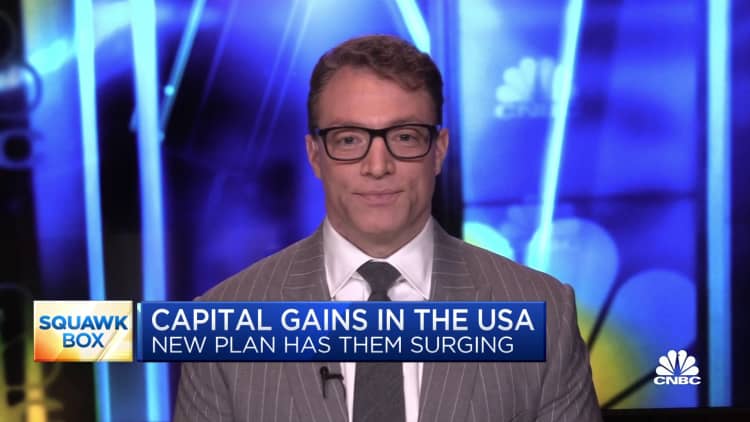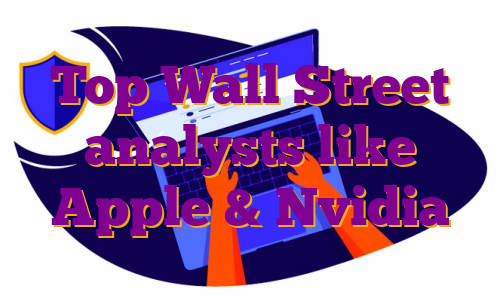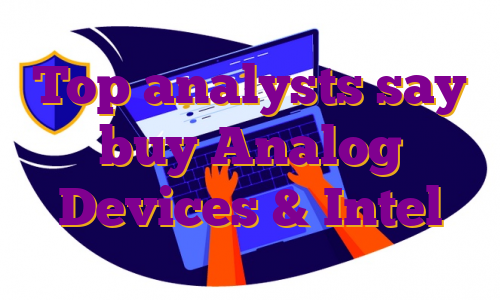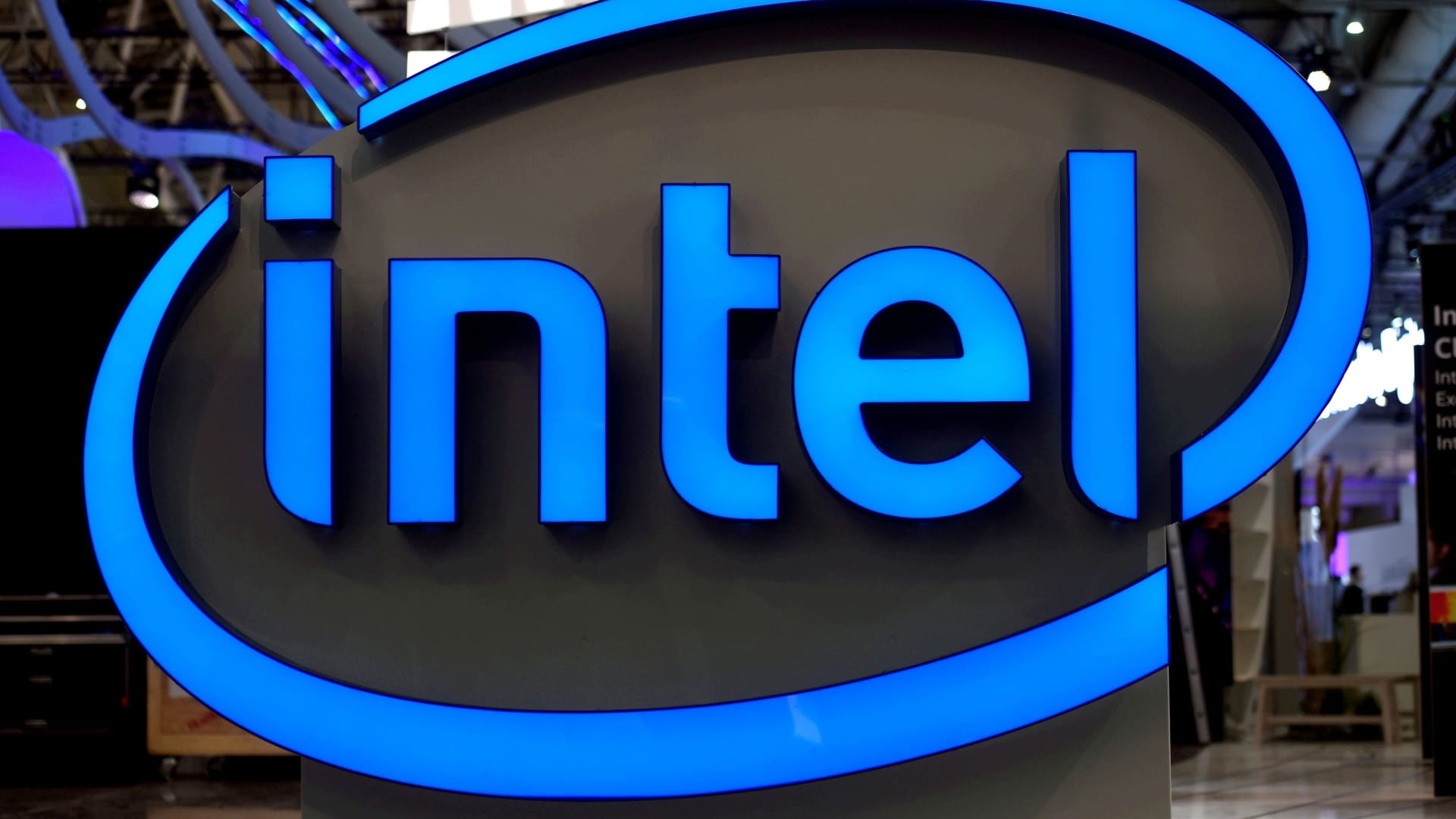Shapecharge | E+ | Getty ImagesIf you’re a higher-income Medicare beneficiary, you may be paying less in extra premium charges in 2023 than you were this year.So-called income-related adjustment amounts, or IRMAAs, which are based on your tax return from two years earlier, kick in next year at $97,000 for single tax filers and $194,000 for joint filers (based on their 2020 return), up from $91,000 and $182,000, respectively.Additionally, with the standard Part B (outpatient care coverage) premium dropping by 3% next year to $164.90 from $170.10 in 2022, the IRMAAs also are less costly.The surcharges apply to both Part B and Part D (prescription drug coverage) premiums and affect about 7% of Medicare’s 64.3 million beneficiaries. The higher your income, the higher the charge. (See charts below.)Whether you have to pay the surcharge is based on your modified adjusted gross income as defined by the Medicare program: your adjusted gross income plus tax-exempt interest income.”You only have to go $1 over that [lowest] breakpoint and you’re subject to IRMAAs,” said certified financial planner Barbara O’Neill, owner and CEO of Money Talk, a financial education company. “If you’re close to that or close to going to a higher tier, you’ve really got to be proactive,” O’Neill said.In other words, there are some strategies and planning techniques that can help you avoid or minimize those IRMAAs. Here are four to consider:1. Focus on income streams under your controlWhile some income in retirement is generally set — i.e., Social Security and/or a pension — the key to avoiding IRMAAs is to focus on what income streams you can control, said CFP Judson Meinhart, senior financial advisor and manager of financial planning for Parsec Financial in Winston-Salem, North Carolina.”The key to keeping [your income] below the IRMAA brackets is planning ahead to know where your income is coming from,” Meinhart said.More from FA Playbook:Here’s a look at other stories impacting the financial advisor business.Be aware that the IRMAA determination is typically based on your tax return from two years earlier. If your income has dropped since then, you can appeal the IRMAA decision using Form SSA-44 and providing proof that you’ve experienced a “life-changing event” such as retirement, death of a spouse or divorce.2. Consider Roth IRA conversionsOne way to keep your taxable income down is to avoid having all of your nest egg in retirement accounts whose distributions are taxed as ordinary income, such as a traditional IRA or 401(k) plan. So whether you’ve signed up for Medicare yet or not, it may be worth converting taxable assets to a Roth IRA.Roth contributions are taxed upfront, but qualified withdrawals are tax-free. This means that while you would pay taxes now on the amount converted, the Roth account would provide tax-free income down the road — as long as you are at least age 59½ and the account has been open for more than five years, or you meet an exclusion.”You pay a little more now to avoid higher tax brackets or IRMAA brackets later on,” Meinhart said.It also helps that Roth IRAs do not have required minimum distributions, or RMDs, in the owner’s lifetime. RMDs are amounts that must be withdrawn from traditional IRAs, as well as both traditional and Roth 401(k) accounts, once you reach age 72.When RMDs from traditional accounts kick in, your taxable income could be pushed up enough that you become subject to IRMAAs, or to a higher amount if you already were paying the surcharge.”A lot of people get into trouble by taking no money out of their 401(k) plan or IRA, and then they have their first RMD and it puts them in one of those IRMAA brackets,” Meinhart said.3. Keep an eye on capital gainsIf you have assets that could generate a taxable profit when sold — i.e., investments in a brokerage account — it may be worth evaluating how well you can manage those capital gains. While you may be able to time the sale of, say, an appreciated stock to control when and how you would be taxed, some mutual funds have a way of surprising investors at the end of the year with capital gains and dividends, both of which feed into the IRMAA calculation. “With mutual funds, you don’t have a whole lot of control because they have to pass the gains on to you,” said O’Neill, of Money Talk. “The problem is you don’t know how big those distributions are going to be until very late in the tax year.” Depending on the specifics of your situation, it may be worth considering holding exchange-traded funds instead of mutual funds in your brokerage account due to their tax efficiency, experts say.For investments whose sale you can time, it’s also important to remember the benefits of tax-loss harvesting as a way to minimize your taxable income.That is, if you end up selling assets at a loss, you can use those losses to offset or reduce any gains you realized. Generally speaking, if the losses exceed the profit, you can use up to $3,000 per year against your regular income and carry forward the unused amount to future tax years.4. Tap your philanthropic sideIf you’re at least age 70½, a qualified charitable contribution, or QCD, is another way to keep your taxable income down. The contribution goes directly from your IRA to a qualified charity and is excluded from your income.”It’s one of the few ways you can really get money out of an IRA completely tax-free,” Meinhart said. “And when you’re 72, that charitable distribution can help offset your required minimum distributions.”The maximum you can transfer is $100,000 annually; if you’re married, each spouse can transfer $100,000. .
Depending on the specifics of your situation, it may be worth considering holding exchange-traded funds instead of mutual funds in your brokerage account due to their tax efficiency, experts say.For investments whose sale you can time, it’s also important to remember the benefits of tax-loss harvesting as a way to minimize your taxable income.That is, if you end up selling assets at a loss, you can use those losses to offset or reduce any gains you realized. Generally speaking, if the losses exceed the profit, you can use up to $3,000 per year against your regular income and carry forward the unused amount to future tax years.4. Tap your philanthropic sideIf you’re at least age 70½, a qualified charitable contribution, or QCD, is another way to keep your taxable income down. The contribution goes directly from your IRA to a qualified charity and is excluded from your income.”It’s one of the few ways you can really get money out of an IRA completely tax-free,” Meinhart said. “And when you’re 72, that charitable distribution can help offset your required minimum distributions.”The maximum you can transfer is $100,000 annually; if you’re married, each spouse can transfer $100,000. .
Starboard snaps up a position in Wix, and building free cash flow may become a focal point
Marco Vdm | E+ | Getty ImagesCompany: Wix.com (WIX)Business: Wix.com is an Israeli information technology company that develops and markets a cloud-based platform that enables users to create a website or web application. Their platform consists of three web creation products, each with a different purpose or primary audience: (i) Wix ADI, intended for fast website creation; (ii) the Wix Editor, intended for full website creation targeted at users with basic, average or above average technological skills; and (iii) Editor X, intended for advanced users such as design professionals. As of Dec. 31, 2021, Wix had approximately 222 million registered users and 6 million premium subscriptions.Stock Market Value: $4.2B ($72.21 per share)related investing news
Analysts name the top ‘high conviction’ stocks for playing the market turbulenceActivist: Starboard ValuePercentage Ownership: 9.00%Average Cost: $66.79Activist Commentary: Starboard is a very successful activist investor and has extensive experience helping companies focus on operational efficiency and margin improvement. Starboard also has a successful track record in the information technology sector. In 45 prior engagements, it has a return of 32.36% versus 13.90% for the S&P 500 over the same period. Starboard has had a notable track record with web applications companies going back to 2004 with their 13D investment in Register.com. Register.com was sold to Web.com in 2005 for $135 million, yielding Starboard a 30.82% return versus 11.37% for the S&P 500 over the same period. On June 8, 2018, Starboard filed a 13D on Web.com Group Inc. In October 2018, Web.com was acquired by Siris Capital Group and combined three years later with Endurance International, a comp to GoDaddy’s hosting business. Starboard made a 47.27% return on its Web.com 13D versus a decline of 1.82% for the S&P 500 over the same period. Finally, on Dec. 27, 2021, Starboard filed a 13D on GoDaddy Inc. which is a live 13D where Starboard currently has a 6.12% return versus 19.16% decline for the S&P 500 over the same period.What’s Happening?Behind the ScenesWix is a market leader in web development tools that operates in an attractive space with long-term growth tailwinds. They have a sticky business that is not typically affected in bad economies: People do not shut down their websites in down markets.Prior to Covid, the company was growing in the high teens but growth increased to approximately 30% per year during the pandemic. During this time, Wix increased its cost structure and hired new employees. However, this high rate was not a new, perpetual level of growth as much as it was an accelerant, and since Covid the company’s growth rate has declined to approximately 10%. As a result, Wix’s free cash flow margins declined from 15% to 0%. These margins should not only return to 15% but could exceed 20%.Wix initially targeted 20% FCF margins but that assumed a 20% growth rate. They have since committed to 20% FCF margins by 2025 that is not dependent on 20% growth by implementing a $150 million cost savings program. If the company is committing to 20%, it is very likely that more than that can be done and we have seen companies significantly exceed their estimates before with Starboard involved. As they have done many times in the past, Starboard will work with Wix to help generate a better balance of growth and profitability. While the Rule of 40 (growth rate plus profit margin) for software companies does not squarely apply here, it is certainly analogous and Starboard could work with the company to help it achieve double-digit growth rates and double-digit free cash flow margins.In addition to the cost savings plan, Wix had announced a plan to buy back $500 million of stock. Sounds like things companies do when they know there is an activist at the door. Whatever the motivation, it is good for shareholders that it appears that the company and Starboard are on the same page, and it looks like they can work together to increase shareholder value. Starboard has extensive experience in helping companies optimize growth and margins, typically from a board level. Based on their history and track record, we think this would be best done with Starboard getting one or two seats on the board.While Starboard’s primary objective here is operational, when an activist engages with a company, it often puts that company in pseudo-play getting the attention of strategic investors and private equity. While Starboard is not advocating for any strategic transaction, they are economic animals with fiduciary duties. If an offer came in at the right price, they would weigh it against shareholder value as a standalone entity and do what they believe to be best for shareholders. There has also been speculation that Starboard is trying to get Wix acquired by GoDaddy, as Starboard is one of the largest shareholders of GoDaddy. GoDaddy is not likely the best potential acquirer for this Company and this is not something Starboard would even suggest. If GoDaddy or anyone else showed an interest in acquiring the Company and the Company decided to sell, Starboard would recommend that the Company sell to the best offer after an arms-length sales process.There is one other similarity between Wix and many other Starboard activist positions. It is run by the founder, who often is not the best person to operate a public company. Moreover, in this case, the company’s co-founder, CEO and director Avishai Abrahami; co-founder and VP of client development Nadav Abrahami; and chief architect of research and development Yoav Abrahami, are all brothers. Also, the president and COO, Nir Zohar, is married to the VP Design & Brand, Hagit Zohar. While this could look like a classic case of nepotism and a founder-led company being run like a private firm, this is not necessarily the case here and not likely a focus of Starboard. This management team developed great products resulting in a best-of-breed market leader. Moreover, they are already taking steps to focus on operations. This is not about selling Wix or replacing management, but purely working with the company to focus on free cash flow and shareholder value as opposed to solely focusing on growth.Ken Squire is the founder and president of 13D Monitor, an institutional research service on shareholder activism, and he is the founder and portfolio manager of the 13D Activist Fund, a mutual fund that invests in a portfolio of activist 13D investments. Squire is also the creator of the AESG™ investment category, an activist investment style focused on improving ESG practices of portfolio companies. .
Open enrollment season for 2023 employee benefits is getting underway
Hinterhaus Productions | Digitalvision | Getty ImagesIt’s that time of year, when workers get to make some decisions about their employee benefits.Many companies are beginning to hold their annual open enrollment period, which is when employees can sign up for 2023 health insurance — as well as consider other benefits, if your employer offers them. Some may offer extras like supplemental life or disability insurance, pet insurance or help with education costs.”People tend to [review] their benefits very quickly,” said Paul Fronstin, director of health benefits research at the Employee Benefit Research Institute. “I think the most important thing is that you actually look at what’s being offered.”More from Personal Finance:
How to save as food inflation jumps more than 11% in a year
Here’s how much you can save by secondhand shopping
Pay isn’t keeping up with inflation. What experts say to doFor health insurance, workers may have options to choose from, including a high-deductible health plan, which in 2023 means one with a deductible of at least $1,500 for single coverage and $3,000 for a family plan.Because of the higher deductible — the amount you pay for covered medical costs before insurance kicks in — the monthly premiums may be lower than other coverage options.Health savings accounts come with triple tax benefitHigh-deductible plans also might come with a health savings account, or HSA. This comes with a triple tax benefit: Contributions are made pretax, investment growth is untaxed and withdrawals spent on qualified medical expenses are tax-free also. For 2023, the annual cap on HSA contributions is $3,850 for self-only coverage and $7,750 for family coverage. You also can leave the money there from year to year.If no HSA is offered, your company might offer a health flexible spending account, or FSA. Money you contribute to FSAs are also made pretax and used to cover medical expenses. This year, the contribution limit is $2,850 per employee. (FSA caps for 2023 have not been announced yet.)You could end up losing at least part of [your contributions], depending on how the FSA is set up.Paul FronstinDirector of health benefits research at the Employee Benefit Research InstituteHowever, they usually come with a “use it or lose it” clause — meaning if you don’t spend the balance by the end of the year, you lose it unless your company is among those that give you a grace period or allow a certain amount to roll over to the next year.”You have to think carefully about how often you go to the doctor, how much are your maintenance medications,” Fronstin said. “You could end up losing at least part of [your contributions], depending on how the FSA is set up.”Regardless of whether you use either of those pretax savings options, it’s important to consider how you’d cover any out-of-pocket costs that arise from seeing a doctor or otherwise using the health care system, said Jeff Levin-Scherz, a managing director for Willis Towers Watson. “It can cost more in premiums to pay less out of pocket … but many families can’t afford unexpected costs,” Levin-Scherz said. Employees are contributing an average $4,412 for their health insurance in 2022, of which $2,520 is paid in the form of premiums and $1,892 is paid through cost sharing such as deductibles, copays and coinsurance, according to Aon.Other benefits may be availableAside from health insurance, you may be offered disability insurance for free or at a low cost. The two basic types are short-term disability, which generally replaces 60% to 70% of your salary, and long-term disability, which generally kicks in after three to six months and is about 40% to 60% of your income. Some companies also let you purchase additional coverage. The same goes for life insurance: You may get a certain amount of coverage — say, equal to one year’s salary — for a low or no premium, with the opportunity to purchase additional coverage.If you consider purchasing extra disability or life insurance, keep in mind that the policy is generally tied to your employment at the company offering the coverage — meaning if the coverage is important to you for the long term, you may want to explore securing a policy outside of the workplace.Other common benefits that might be available through your job include financial planning, tuition reimbursement programs and backup child care, according to a 2021 survey from Willis Towers Watson. Some companies also are offering emergency savings options, providing help with student loan debt or making contributions to 529 college savings plans. .
“It can cost more in premiums to pay less out of pocket … but many families can’t afford unexpected costs,” Levin-Scherz said. Employees are contributing an average $4,412 for their health insurance in 2022, of which $2,520 is paid in the form of premiums and $1,892 is paid through cost sharing such as deductibles, copays and coinsurance, according to Aon.Other benefits may be availableAside from health insurance, you may be offered disability insurance for free or at a low cost. The two basic types are short-term disability, which generally replaces 60% to 70% of your salary, and long-term disability, which generally kicks in after three to six months and is about 40% to 60% of your income. Some companies also let you purchase additional coverage. The same goes for life insurance: You may get a certain amount of coverage — say, equal to one year’s salary — for a low or no premium, with the opportunity to purchase additional coverage.If you consider purchasing extra disability or life insurance, keep in mind that the policy is generally tied to your employment at the company offering the coverage — meaning if the coverage is important to you for the long term, you may want to explore securing a policy outside of the workplace.Other common benefits that might be available through your job include financial planning, tuition reimbursement programs and backup child care, according to a 2021 survey from Willis Towers Watson. Some companies also are offering emergency savings options, providing help with student loan debt or making contributions to 529 college savings plans. .
Top Wall Street analysts like Apple & Nvidia
Apple CEO Tim Cook presents the new iPhone 14 at an Apple event at their headquarters in Cupertino, California, U.S. September 7, 2022. Carlos Barria | ReutersThe market outlook is becoming increasingly uncertain, given unwieldy inflation and a slowing economy.Stocks ended Friday with losses. They were ultimately unable to bounce back from a deep sell-off on Tuesday in which the Dow Jones Industrial Average shed more than 1,200 points.Against this backdrop, investors need to look past current turbulence as they choose their investments. To that end, here are five stocks chosen by top Wall Street pros, according to TipRanks, a platform that ranks analysts based on their performance history.AppleApple (AAPL) needs no introduction. The iPhone-maker has been beating all odds and raging ahead with compelling product launches. On Sept. 7, the company held its big fall event, where it launched its widely-awaited iPhone 14 series, along with Apple Watches and AirPods.Following the event, Monness Crespi Hardt analyst Brian White said that the product introductions enhanced “a portfolio that has never been stronger and a platform more ubiquitous.” (See Apple’s Hedge Fund Trading Activity on TipRanks)White was cautious that the treacherous macro environment may make consumers hesitate to indulge in a new smartphone purchase. However, he was encouraged by the fact that the company did not hike the prices of the iPhone 14 smartphones.White notes that Apple’s current price-to-earnings is above its average over recent years. However, looking at the long-term business model, the analyst was upbeat that Apple’s strong services business has created a solid foundation of consumer confidence.The analyst, who is at the 470th position among nearly 8,000 analysts tracked on TipRanks, assigned a buy rating on AAPL stock, with a price target of $174.White has a track record of a 57% success rate on his ratings, each rating generating average returns of 11%.EQT CorporationThe growing demand for natural gas as an energy source is driving growth at EQT Corporation (EQT). Needless to say, the rocketing prices of oil and gas this year have also been taking EQT on a wild ride.The company recently entered a deal to acquire shale producer Tug Hill. After the news, RBC Capital Markets analyst Scott Hanold reiterated a buy rating on EQT stock, with a $2 price target raise to $57. “Management’s recent comments during its 2Q22 conference call highlighted that acquisitions need to be more compelling than buying its own stock back and also additive to asset quality, including reducing the corporate break-even point and we believe this deal checks those boxes,” said Hanold, explaining his bullishness. (See EQT Blogger Opinions & Sentiment on TipRanks)Per the analyst’s calculations, the Tug Hill acquisition can take EQT’s free cash flow to $6 billion in 2023, and also boost earnings per share by 10% to 15%. The additional FCF can be utilized toward a higher authorization for share buybacks, but Hanold thinks the company is more likely to use it to reduce its debt.”We believe that EQT shares should outperform peers over the next 12 months. EQT is well positioned with a large asset base focused in the Appalachian Basin,” said Hanold, who is ranked No. 14 among almost 8,000 analysts followed on TipRanks.In all, 66% of Hanold’s ratings have successfully generated 30.9% returns on average.Devon EnergyAnother oil and natural gas exploration and production player, Devon Energy (DVN), is among the favorite choices of the best analysts in the market. The company’s favorable geographical location is driving most of its business. The rich basins of Delaware, Eagle Ford, Anadarko, Powder River, and Williston are the core areas of operation of Devon Energy.Earlier this month, the company entered into a liquefied natural gas (LNG) partnership with Delfin Midstream. The deal involves an agreement between both parties for a long-term liquefication capacity (1 million tonnes per annum) in Delfin’s first floating LNG vessel, with the ability to add another 1Mtpa in the first project or in future vessels.Following the announcement, Mizuho Securities analyst Vincent Lovaglio appeared bullish on the prospects of the deal, reiterating a buy rating on the company with a price target of $91. The analyst thinks that “investment downstream in liquefaction can connect otherwise price disadvantaged Permian natural gas to premium global markets, utilizing excess free cash flow today to convert a molecule once thought a potential liability into an asset.” (See Devon Energy Dividend Date & History on TipRanks)Moreover, the deal could boost Devon’s annual dividend by around 30%. Lovaglio is ranked No. 1 among almost 8,000 analysts on TipRanks. Notably, 91% of his ratings have been successful, each rating giving average returns of 46.2%.BroadcomSemiconductor component manufacturer Broadcom (AVGO) has recently been focusing on incorporating high-margin software into its product portfolio with the help of organic efforts as well as strategic acquisitions. Therefore, Broadcom’s $61 billion purchase of virtualization software firm VMware caught the attention of several analysts.Mizuho analyst Vijay Rakesh was one of those upbeat about the acquisition. “With VMware, we believe AVGO could follow a strategy similar to Symantec-CA where it kept key core assets and divested some low volume high touch markets,” he said, highlighting the company’s focus on higher margin growth. (See Broadcom Stock Investors on TipRanks)The analyst believes that the acquisition will significantly drive Broadcom’s earnings per share. The analyst believes that the company’s shares can reach a price of $793, and reiterated a buy rating on the stock.Broadcom’s strong market position in several domains, operating leverage and focus on acquisitions that boost its margins make Rakesh believe in its value-unlocking potential.Ranked No. 128 among around 8,000 analysts on TipRanks, Rakesh has had success with 57% of his ratings. Moreover, each of his ratings has generated 20.2% returns on average.NvidiaAnother of Vijay Rakesh’s top picks for this season is semiconductor behemoth Nvidia (NVDA). The company was recently in the limelight for guiding for a $400 million hit to revenue in the third quarter due to U.S. restrictions on sales of high-performance AI chips in China.After speaking with top officials from Nvidia, Rakesh emerged bullish on Nvidia once again, reiterating a buy rating on the stock with a price target of $225. Rakesh was upbeat about the company’s high-end Hopper architecture, which is on track despite the ban. That’s because most of the development team is in the U.S. (See Nvidia Stock Chart, Price History & Graphs on TipRanks)”We believe the Hopper ramp will not be affected by the export ban with the updated 8-K allowing for supply chain freedom through Hong Kong and China,” said Rakesh, who believes this loophole to be a significant breather for the company.Moreover, more than 90% of all AI workloads in the data center world are supported by Nvidia. AI is likely to provide a key macro risk-resistant secular growth opportunity to the company. .
Top analysts say buy Analog Devices & Intel
Intel Foundry Services will manufacture multiple chips for MediaTek for a range of smart edge devices, the two companies said on Monday.Fabian Bimmer | ReutersMarkets are expected to remain volatile for the remainder of the year or at least until inflation shows some sign of stabilizing without jeopardizing economic growth.Indeed, stocks sold off sharply on Friday after Federal Reserve Chairman Jerome Powell delivered a speech at Jackson Hole, Wyoming. He continued to take a hard line against inflation, forcing investors to consider the possibility of higher rates for a longer period.During a shake-up like this, it’s critical for investors to make informed decisions to ensure minimal portfolio damage during a potential downturn.Here are five stocks with attractive long-term prospects, highlighted by Wall Street’s top professionals, according to TipRanks, a platform that ranks analysts based on their performance.IntelProduct delays and a productivity plateau have kept chipmaker Intel (INTC) under pressure for the past few years. However, the lull was broken on Aug. 23 amid news of a key semiconductor investment program between Intel and global infrastructure company Brookfield. The arrangement will help Intel secure and maintain its financial position and dividend-generating capability.The partnership, which calls for a $30 billion joint investment, will accelerate the development of two new wafer fabrication production sites in Chandler, Arizona. The announcement led Needham analyst Quinn Bolton to assess the consequences of the partnership. (See Intel Stock Investors sentiments on TipRanks)”The partnership enables a new capital source that costs approximately 6.5% (our est.) and protects Intel’s cash/debt position for future investment and sustaining the dividend,” said Bolton.The analyst believes that the program can enable Intel to achieve $15 billion lesser capital expenditure than the traditional model. This will, in turn, boost the company’s free cash flows.Bolton, who is ranked No.3 among TipRanks’ database of around 8,000 Wall Street analysts, reiterated a buy rating on Intel, with a price target of $40. The analyst has been successful in his ratings 69% of the time, with each delivering an average return of 43%.Applied MaterialsApplied Materials (AMAT) provides wafer fabrication equipment for the foundry/logic (F/L) and memory end markets. As with most semiconductor companies, supply chain issues and elevated supply costs are weighing on the company’s profitability.However, Bolton pointed out that the company’s measures to take pricing actions to balance the costs are promising. Moreover, solid orders from the foundry/logic market continue to be strong, and are helping the company offset the weakening demand in the memory and ICAPS (IoT, Communications, Automotive, Power and Sensors) markets. (See Applied Materials Dividend Date & History on TipRanks)Bolton, who expects decent growth in the wafer fabrication equipment industry this year, is positive that Applied Materials will be able to hold on to its market share, given its leading position in that space.Bolton reinforced a buy rating on the stock, but lowered the price target to $125 from $130 after factoring in near-term challenges.BRC Inc.Premium coffee and media company Black Rifle Coffee Company, or BRC Inc. (BRCC) has been able to hedge itself against the broader market headwinds that have roiled the year thus far.Recently, Tigress Financial Partners analyst Ivan Feinseth reiterated a buy rating on the BRCC stock. Moreover, he raised the price target from $17 to $19 based on the belief that “significant upside in the shares exists.”BRC has made a pivotal shift in growth strategy recently, and is focusing more on mass-market distribution of its products. Feinseth believes that the new path can lead to increased sales growth and product recognition at a lower capital investment. (See BRC Stock Chart, Price History & Graphs on TipRanks)”BRC’s strong brand equity and unique customer connection uniquely position it to compete in the massive U.S. coffee market,” explained the analyst.Feinseth holds the 186th position among more than 8,000 analysts followed on TipRanks. Furthermore, his ratings have been successful 62% of the time, each generating average returns of 12.7%.Analog DevicesAnalog Devices (ADI) is another semiconductor stock catching the eyes of top Wall Street pros. The company recently reported upbeat quarterly results, supported by solid order trends driven by its exposure to automotive and industrial sectors.JPMorgan analyst Harlan Sur took a deep dive into the company’s developments and emerged optimistic. The analyst was strongly positive about Analog Devices’ diversified consumer business, which he expects to consistently continue to outperform the overall consumer end market, even in an uncertain environment. (See Analog Devices Insider Trading Activity on TipRanks)”ADI is exposed to long lifecycle prosumer applications (30% of mix) and the fast-growing segment of the portable market (e.g., wearables, hearables, and premium smartphones) with low China consumer exposure (low-single-digit % of total revenues). Overall, even in the face of a potential slowdown, the team has multiple cost levers to shield its earning power and free cash flow generation,” said Sur.Based on his track record, Sur is ranked No. 228 among more than 8,000 analysts in the TipRanks database. Moreover, 61% of his ratings have been profitable, each garnering average returns of 17%.SynopsysElectronic products and software company Synopsys (SNPS) is another favorite stock of analyst Harlan Sur. As customers increasingly leverage advanced computing to verify their designs as fast as possible, Synopsys is witnessing solid adoption of its offerings.Additionally, chip design complexity is increasing with the emergence of new advanced technological applications. This is expected to be beneficial for Synopsys, providing it with a secular growth opportunity. “Given the backlog/bookings strength and continued strong chip/system design activity, we believe that the company is set to grow revenues in CY23 even in the face of a potential macro/semiconductor industry slowdown,” said Sur. (See Synopsys Hedge Fund Trading Activity on TipRanks)Moreover, Sur expects the core tools of the electronic design automation software segment to grow, providing a “very stable but fierce competitive environment with vendors.” This is because the majority of the electronic design automation market share is divided among three vendors — Cadence Design (CDNS), Synopsys and Siemens, which effectively blocks the chances of entry of any other vendor.Thus, Sur is certain that Synopsys is in a compelling position to stand strong even in an uncertain macro environment. He reiterated a buy rating on the stock and raised the price target to $440 from $400. .










